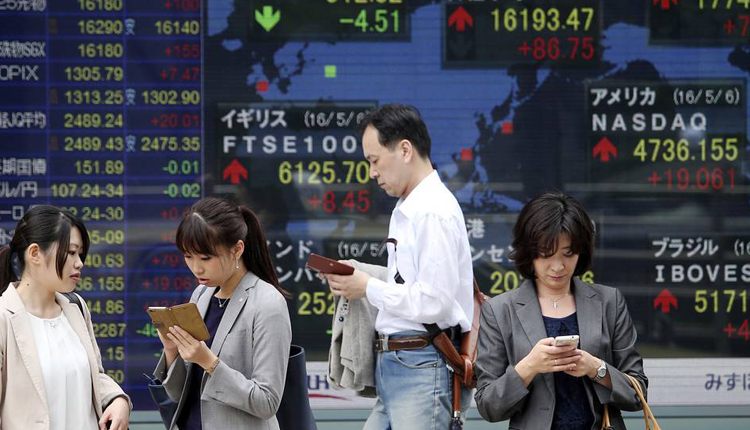Asian stocks were mixed on Thursday afternoon following an overnight decline on Wall Street after the closely-watched ten-year Treasury yield touched its lowest in more than one year.
The broad MSCI Asia-ex Japan index recovered from its earlier slip to rise fractionally to 523.50, as of 12:51 p.m. HK/SIN.
The Nikkei 225 in Japan dropped 1.43 percent in afternoon trade as index heavyweight Fanuc saw its shares tumbling by more than 1 percent. The Topix index also fell 1.59 percent.
Mainland Chinese stocks were mixed by the afternoon, as the Shanghai composite fell 0.26 percent while the Shenzhen component gained around 0.34 percent. The Shenzhen composite also rose 0.192 percent.
Over in Hong Kong, the Hang Seng index was largely flat. Hong Kong-listed shares of China Construction Bank declined 0.87 percent after the company posted its first quarterly profit drop since 2015.
Chinese telecommunications equipment maker ZTE, on the other hand, saw its Hong Kong-listed stock surge 10.05 percent after the company forecasted a jump in its first quarter profit. ZTE, the world’s fourth-largest telecommunications equipment maker by market share, was forced to stop most business between April and July last year due to U.S. sanctions.
Meanwhile, South Korea’s Kospi shed 0.62 percent as shares of industry heavyweight Samsung Electronics declined around 1 percent.
Australia’s ASX 200 rose 0.6 percent, with almost all the sectors seeing gains.
Overnight on Wall Street, the Dow Jones Industrial Average slipped 32.14 points to close at 25,625.59 and the S&P 500 shed 0.5 percent to finish at 2,805.37. The Nasdaq Composite closed 0.6 percent lower at 7,643.38.
The declines came as the benchmark 10-year rate hit its lowest level since Dec. 15, 2017. It was last at 2.3559 percent after seeing levels above 2.4 percent yesterday.
Investors are keeping an eye on rates after the 10-year fell below the 3-month rate last week for the first time since 2007. It is a development that investors call an inverted yield curve and is seen as an early indicator of a recession.
“The reason why it is so accurate is because when short term rates exceed long time rates, it is telling us that investors are worried about the near term outlook for the economy and want to be compensated more for tying up their money during this time,” Kathy Lien, managing director of foreign exchange strategy at BK Asset Management, wrote in an overnight note.
“Investors are having a hard time deciding whether the drop in yields is positive or negative for stocks,” Lien said. “On the one hand, lower rates are good for borrowing but on the other, the yield curve inverted as a result of falling interest rates.”
On the U.S.-China trade front, U.S. Trade Representative Robert Lighthizer and Treasury Secretary Steven Mnuchin are set to resume negotiations with their Chinese counterparts in Beijing on Thursday, in a bid to strike a deal on trade.
Ahead of the meeting, Reuters reported that the Chinese side made unprecedented proposals on issues such as forced technology transfer, citing U.S. officials.
“I think this time around … the context is different,” Chou Chong, head of Asia equity at Ostrum Asset Management Asia, told CNBC’s “Street Signs” on Thursday. “The bag of tricks or what you call the easy hanging fruits that China had — global trade, people buying more goods — that’s kind of running out a bit.”
The U.S. dollar index, which tracks the greenback against a basket of its peers, was at 96.873 after seeing an earlier high of 96.976.
Source: CNBC
